Uncovered: Site Surveys in Jamaica Bay
Written by: Loissa Harrison-Parks
Hello Again Everyone!
Hard to believe I am already at week 8 of my internship at Gateway. The past few weeks have been a hodgepodge of archeological excavations, conducting site surveys and cataloging.
The Sandy Hook site has continued to yield artifacts and useful geological information regarding the tavern’s history. During the last week, we’ve uncovered part of the building’s foundation, a window and fragments of a wooden door. The soil, which contained thick ash and coal layers, provided a peek into the final moments just before the tavern’s collapse. Items such as nails, hinges, brick and plaster were very common. Other more rare artifacts such as clay pipes, coins and buttons were also found last week. These are much less common but really paint the picture regarding how active the space truly was.
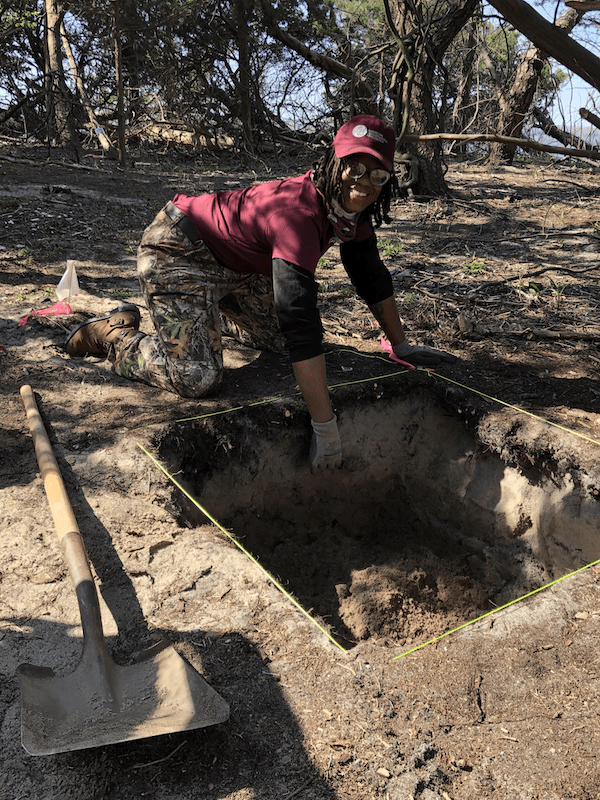
Part of last week’s adventure included conducting site surveys with Holly, the Park Archeologist. We began at Fort Tilden and from there covered Jacob Riis Beach and Floyd Bennet Field. These site surveys not only taught me how to assess potential archeology sites, they also provided an opportunity to gain greater insight into the care and maintenance of the park’s historic structures.
Our survey at Fort Tilden was rather brief but chock-full of information regarding the military’s fight against rising sea waters. The first stop was a rocky sea wharf installed by the US military around the 1940s. Much like the museum database forms, site assessment forms serve as a way to provide detailed descriptions of archeological sites, their condition, and whether or not any further action should be taken regarding its conservation.
As you can imagine, this particular wharf sustained decades of erosion and ware. There are a handful of rocks missing and major inundation between the cracks between the stones themselves.
Just down the shore laid another, older, wooden wharf. Unlike the stone wharf, this one dated back to the 1920s. The only remaining features were a few posts which began on the shoreline and extended about 40 feet into the ocean. During high tide, the posts were submerged, only peeking out as waves rolled in before falling back, beneath the water’s edge.
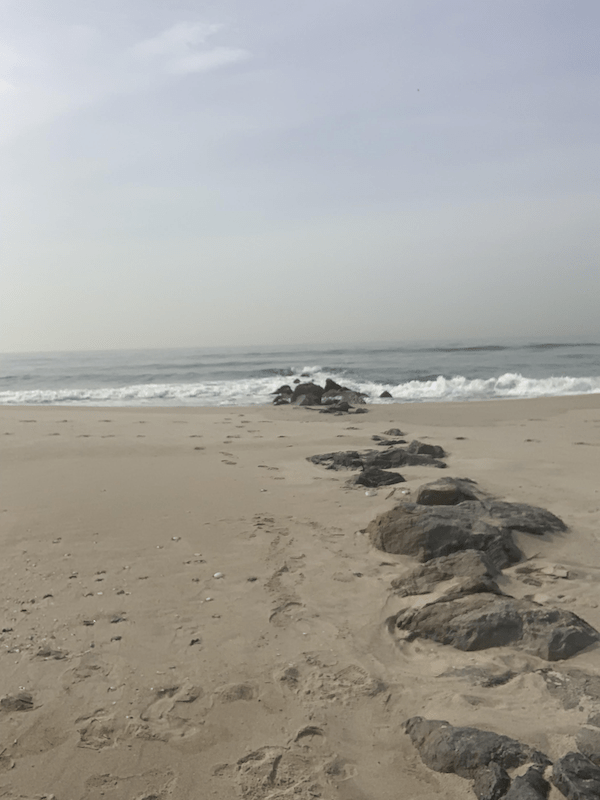
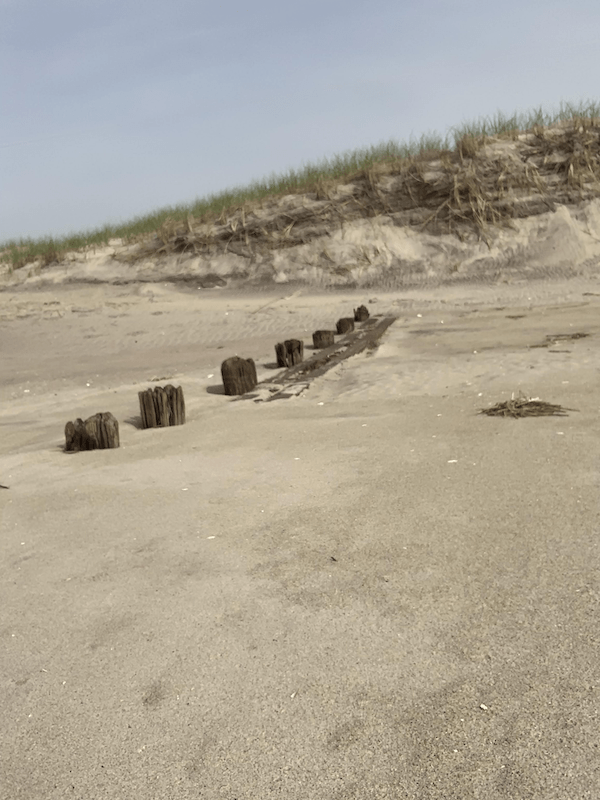
After finishing up on the site assessments at Fort Tilden, we made our way to Jacob Riis Beach. Upon arrival, I received a brief overview of how the beach came to be, as well as the role Jacob Riis played advocating for the park. Holly and I explored the area around the historic Riis Bathhouse and discussed some of the major changes planned for the building. I also got a chance to see the Riis Clock, which stands in the middle of the beach’s mall area, just head of the park’s courtyard. .
Our mission here was to analyze and survey the remains of a building foundation. Not much is known about the history of the building but according to archeological records, it may have been the site of a storehouse or small military-related building.
While conducting our survey, we discovered a handful of artifacts possibly related to the building. Artifacts such as beach glass, slag, carbon and metal debris are a good indication that the site was once occupied and used for various military training exercises. In fact, it is recorded that Jacob Riis was indeed the site for various military drills and training. When a weapon is set off, small fragments of metal and debris are left behind. Although the beach receives heavy foot traffic during the summer, artifacts and remains of this military presence often go unnoticed or are mistaken for litter.

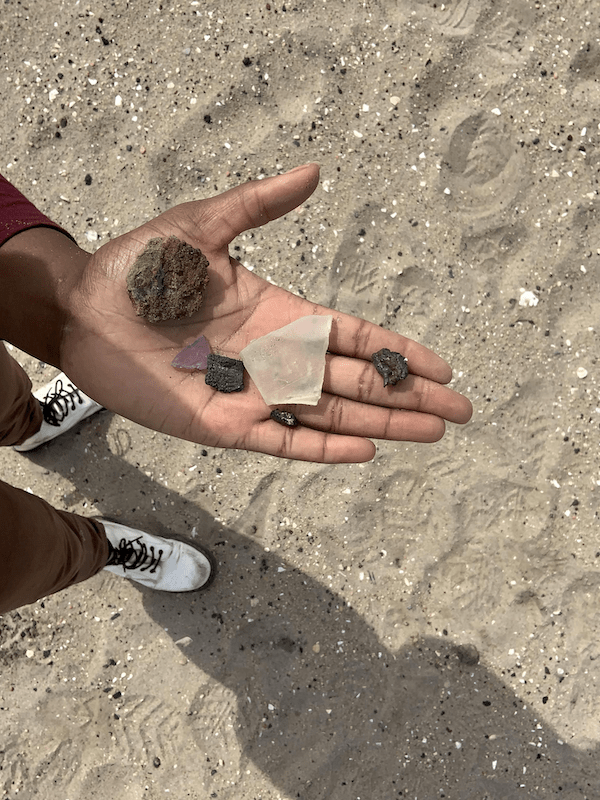
After Jacob Riis we headed to Floyd Bennett Field, New York City’s first municipal airport, later turned into a World War II naval station. Constructed between 1928 and 1931 by the City Department of Docks, Floyd Bennet Field was a significant airport in its prime. Notable figures like Howard Huges, Charles Lindbergh and Amelia Airheart all flew out of its hangers. Today this area includes over 1,300 acres of grassland, salt-marshes, tidal mudflats, a marina, as well as the former airfield. This also includes the air traffic control tower and terminal that now serves as the William Fitts Ryan Visitor Center (Ryan Visitor Center).
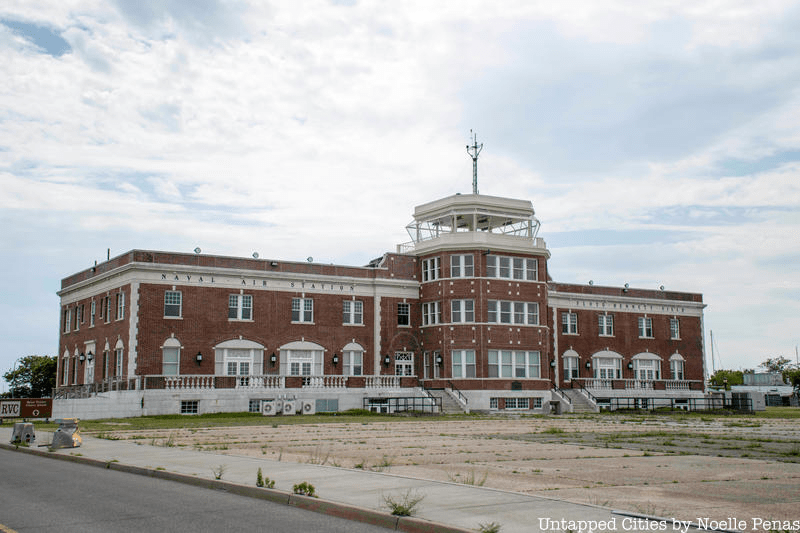
Holly and I toured the area and hiked the trail with the hope of surveying any historic buildings missed in the last archeological report. Although we didn’t manage to find any structures, we did find some amazing artifacts relating to Floyd Bennett Field’s construction. The airfield was created by joining Barren Island with a number of other smaller marsh islands and the mainland by landfill. In fact, most of the area is sitting on the debris and discarded trash from the early 20th century. As Holly and I surveyed the area looking for structures, we stumbled upon an exposed area that revealed some of the contents of the fill. We uncovered a later 19th century ceramic shard, early bottle fragments and even a turn of the century glass ashtray.
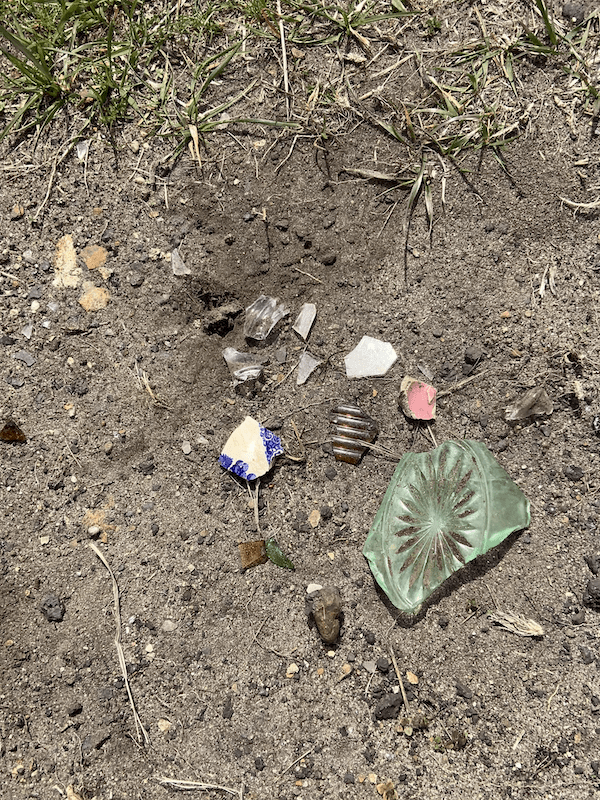
If there is one thing that my day site surveying taught me, it was that although our time excavating Sandy Hook has come to an end, there is still so much history to uncover. I’m excited to see what my last few weeks at Gateway has in store! There hasn’t been a single dull moment and I’m grateful everyday that I get to experience its wonders and history.
